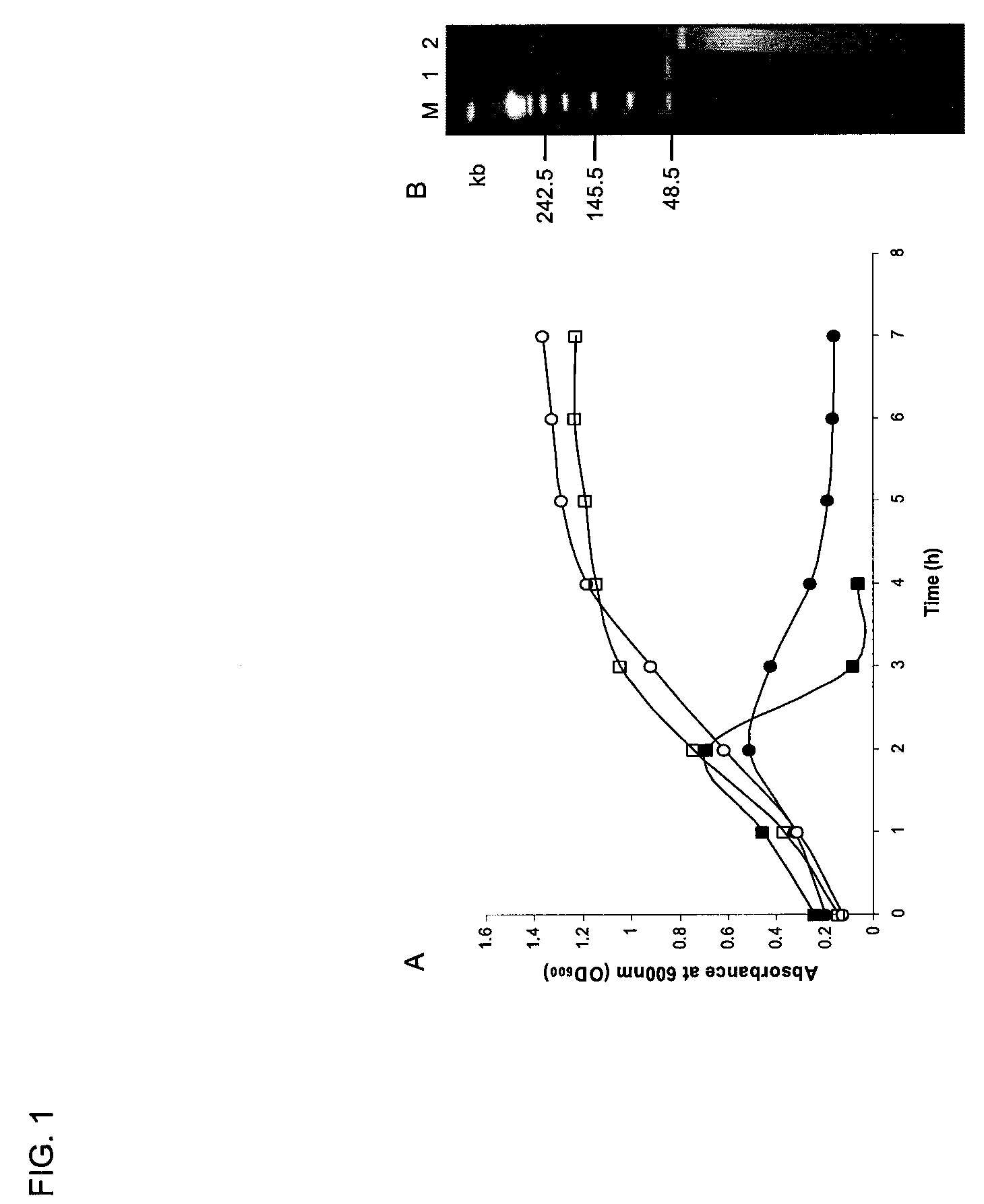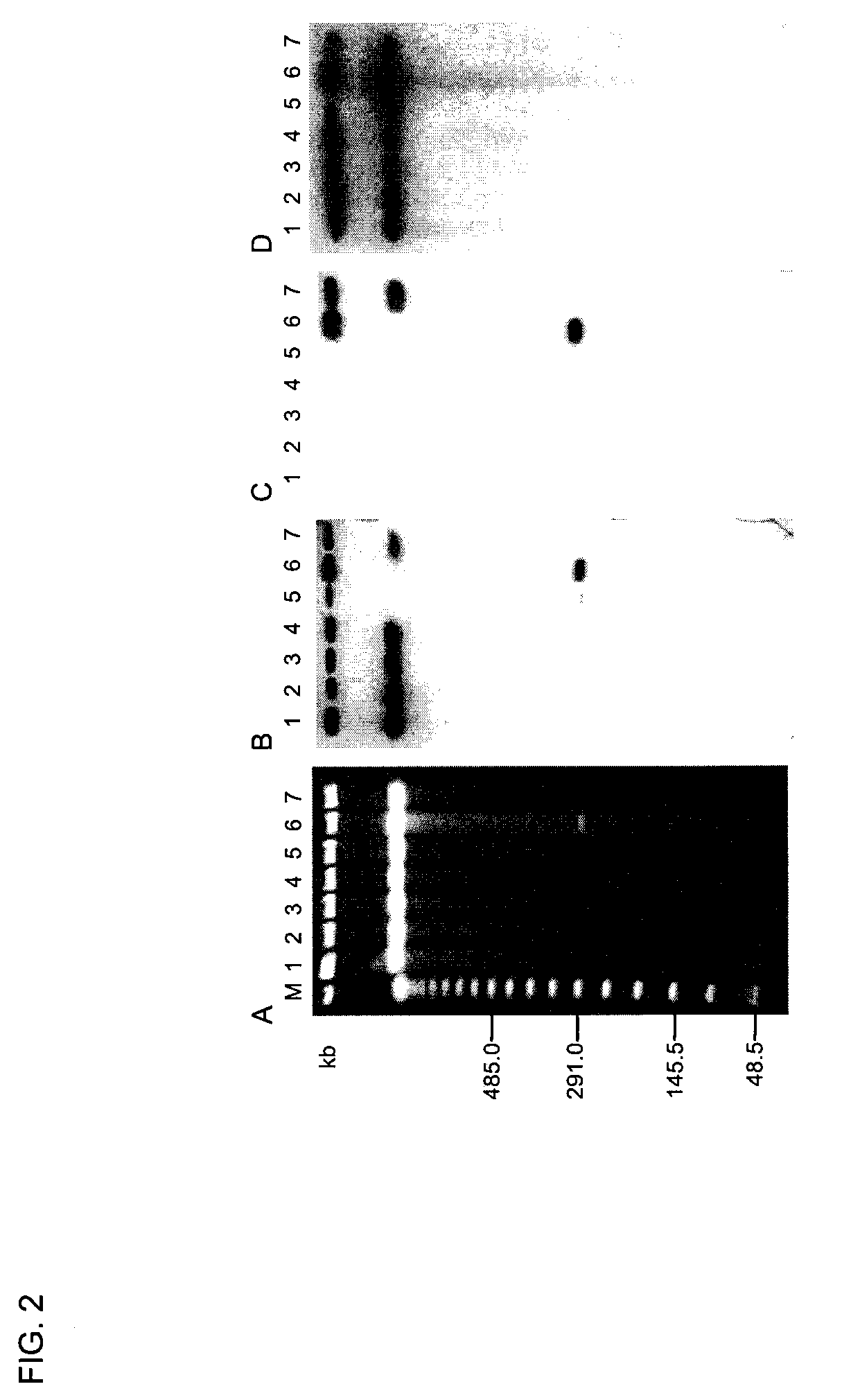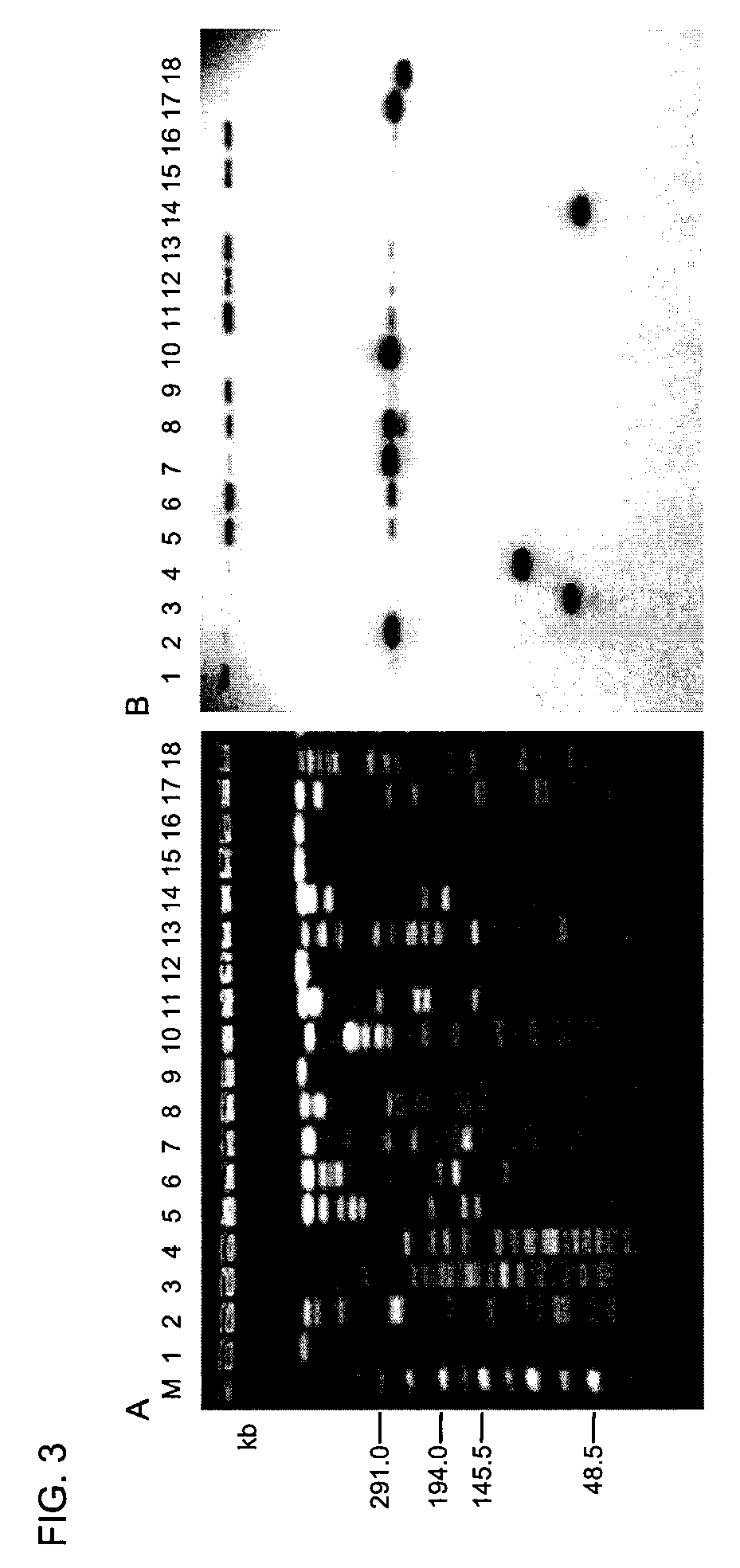Plasmid-encoded neurotoxin genes in Clostridium botulinum serotype A subtypes
a technology of clostridium botulinum and plasmid encoding, which is applied in the field of isolated plasmid encoding neurotoxin genes in clostridium botulinum serotypes, can solve the problems of complicated purification of sufficient quantities of these proteins, and achieve the effect of increasing the therapeutic application
- Summary
- Abstract
- Description
- Claims
- Application Information
AI Technical Summary
Benefits of technology
Problems solved by technology
Method used
Image
Examples
first embodiment
[0025]In a first embodiment, the present invention provides a novel, isolated plasmid, wherein the plasmid is a native plasmid found in a C. botulinum type A strain and encodes either BoNT / A3 or BoNT / A4 and BoNT / B.
[0026]A native plasmid, pCLK, has been discovered in C. botulinum strain Loch Maree which encodes the BoNT / A3 gene, cntA / A3 (Marshall et al. 2007; Smith et al. 2007). A separate native plasmid, pCLJ, has also been discovered in C. botulinum strain 657Ba that harbors both the BoNT / A4 and BoNT / bvB genes, cntA / A4 and cntA / bvB (by stands for bivalent B). These plasmids share significant homology, but are two separate and distinct entities. The plasmid pCLK is 266,805 bp and the plasmid pCLJ is 270,346 bp. Although plasmids have been observed in C. botulinum strains ATCC 3502, 62A and 5328A the BoNT gene has not been found to be associated with these plasmids; instead BoNT / A is located on the chromosome in these strains (Marshall et al. 2007).
[0027]By “plasmid” we mean an auton...
second embodiment
[0030]In a second embodiment, the present invention provides a novel method of obtaining a plasmid-encoded botulinum neurotoxin and neurotoxin protein complex. The method comprises the step of isolating a plasmid encoding the cntA / A or cntA / B neurotoxin genes and genes for the complex proteins from a C. botulinum type A strain. In a preferred method the C. botulinum type A strain is selected from the group consisting of ATCC 3502 [subtype A1], 62A [subtype A1], KyotoF [subtype A2], 5328A [subtype A1 / A2], Loch Maree [subtype A3], 657Ba [subtype A4] and NCTC 2916 [subtype A(B)]. In a preferred embodiment the type A strain is a type A3 strain such as Loch Maree or a type A4 strain such as 657Ba. Other A3 and A4 strains that contain plasmids containing neurotoxin gene clusters are also envisioned as acceptable for this invention.
[0031]The plasmid may be isolated by any known method of isolating plasmids found in bacteria. One of skill in molecular biology will understand that there are ...
third embodiment
[0032]In a third embodiment, the present invention provides methods of producing botulinum neurotoxin and their proteins complexes. In one embodiment, the isolated plasmid of the present invention may be modified to increase protein production. In particular, one may wish to manufacture proteins in clostridia. The isolated plasmids of the present invention may also be useful for genetic manipulations in Clostridium species.
[0033]The following examples are, of course, offered for illustrative purposes only, and are not intended to limit the scope of the present invention in any way. Indeed, various modifications of the invention in addition to those shown and described herein will become apparent to those skilled in the art from the foregoing description and the following examples and fall within the scope of the appended claims.
III. Examples
Bacterial Strains
[0034]The following C. botulinum type A subtype strains from the inventors laboratory culture collection were used: ATCC 3502 [...
PUM
| Property | Measurement | Unit |
|---|---|---|
| pH | aaaaa | aaaaa |
| pH | aaaaa | aaaaa |
| temperature | aaaaa | aaaaa |
Abstract
Description
Claims
Application Information
 Login to View More
Login to View More - R&D
- Intellectual Property
- Life Sciences
- Materials
- Tech Scout
- Unparalleled Data Quality
- Higher Quality Content
- 60% Fewer Hallucinations
Browse by: Latest US Patents, China's latest patents, Technical Efficacy Thesaurus, Application Domain, Technology Topic, Popular Technical Reports.
© 2025 PatSnap. All rights reserved.Legal|Privacy policy|Modern Slavery Act Transparency Statement|Sitemap|About US| Contact US: help@patsnap.com



